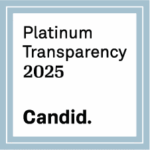News
Supporting Research, Saving Lives
Dr. Karen Connolly has been a Dermatology Foundation member since she landed her first job. As a busy surgical dermatologist, she’s been impressed with the type of cutting-edge research the DF funds and by their ongoing educational offerings — just one of the reasons she’s such an advocate for this organization. As she says in this interview: “To support residents, to support education — that’s so important.”
Exploring Gene Expression Patterns and Biomarkers of Disease Severity in Central Centrifugal Cicatricial Alopecia
Central centrifugal cicatricial alopecia (CCCA), which has been associated with uterine fibroids, is unlike other scarring alopecias because fibrosis rather than chronic inflammation is the ongoing dominant response. This study…
Characterizing the Microbiome in Postmenopausal Women with Vulvar Lichen Sclerosus
Vulvar lichen sclerosus is a chronic inflammatory condition that leads to scarring, obliteration of normal vulvar architecture, dyspareunia, and significant decrease in quality of life. Little is known about the…
Cell Signaling Changes Induced by Surgical Debulking May Improve Response to Smoothened Inhibitor Therapy
Smoothened (SMO) inhibitors, such as vismodegib, are effective treatments for locally advanced basal cell carcinomas (BCCs). However, recurrences are frequent upon treatment discontinuation. Our clinical observations suggest long-term remission for…
Immunoediting in Cutaneous Squamous Carcinogenesis
Cutaneous squamous cell carcinoma (cSCC) is the second most common cancer, with ~700,000 cases, ~3,000 deaths, and billions of dollars in annual treatment-associated costs in the U.S. Escape from immunosurveillance,…
Assessing the Functional Consequences of Mitochondrial Genomic Alterations in Cutaneous Aging
Mitochondria generate energy for cells. They contain their own genome, which supports their function. Photoaging is associated with alterations to this genome, but the effects of these changes on mitochondrial…
Elucidating Genes Involved in the Pathogenesis of Lichen Planus and Lichenoid Dermatoses
We are investigating the pathogenesis of lichen planus (LP) and other lichenoid dermatoses using single-cell RNA sequencing and similar techniques on fresh lesional and nonlesional skin biopsies from patients. We…
Distinguishing the Mechanisms of Tumoral Immune Response and Cutaneous Adverse Events
Checkpoint inhibitor (CPI) therapy has revolutionized cancer treatment, but generates immune-related adverse events (irAEs) that commonly include cutaneous effects. I hypothesize that the tumor response is mechanistically distinct from associated…











